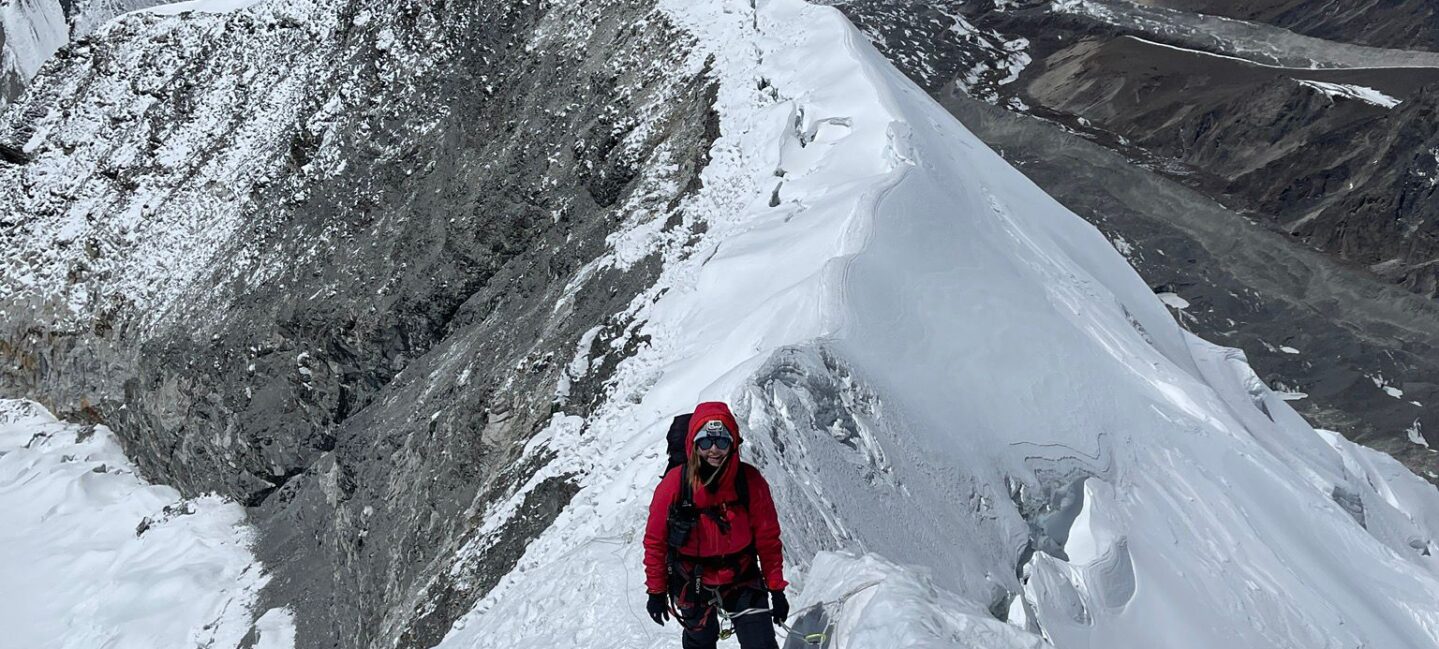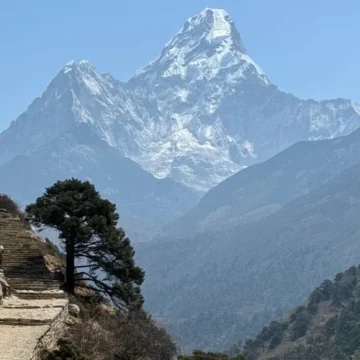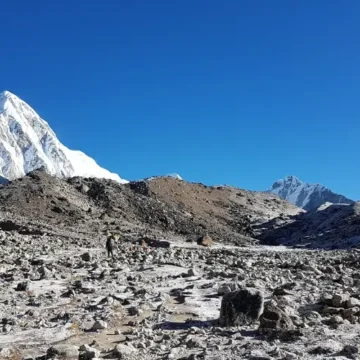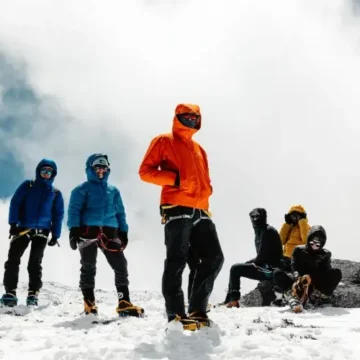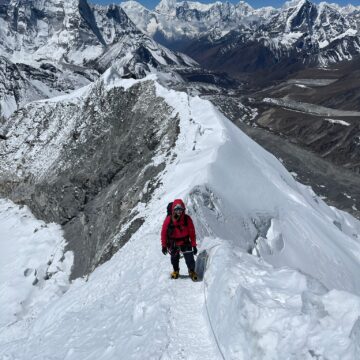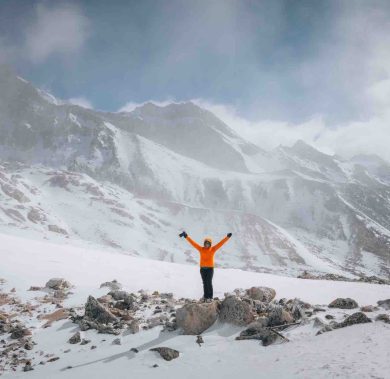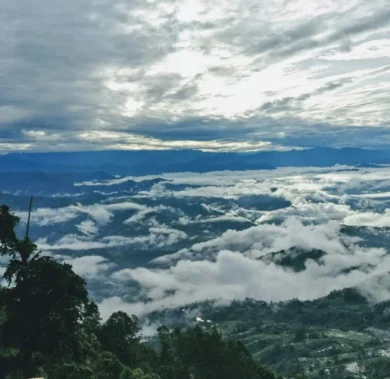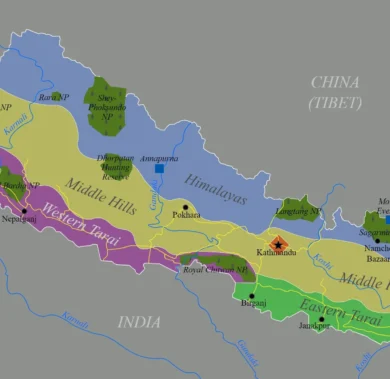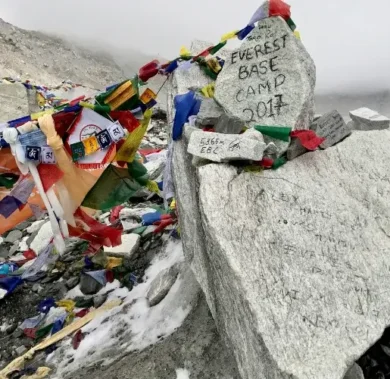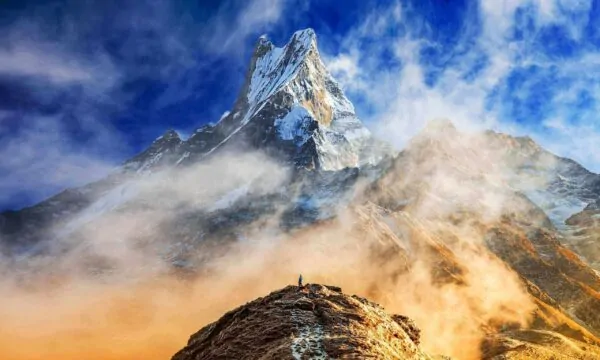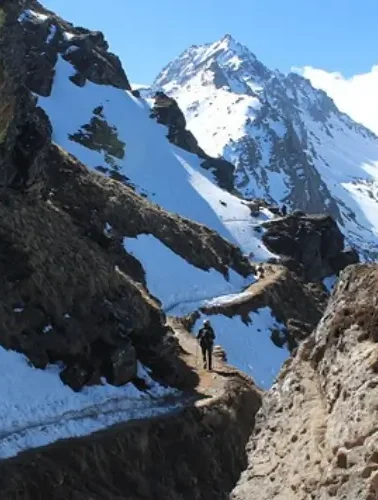
How difficult is the Island Peak Climbing
Table of Contents
How Difficult is the Island peak climbing?
Are you planning to climb the enchanting Island Peak but unsure about how difficult it is? Then, keep reading. In this article, we will tell you everything regarding the difficulties and all the preparations that need to be made for smooth mountain climbing.
There are many novices and experienced hikers who come to this peak in the Everest region to get some climbing experience.
The peak is establishing a reputation as a beginner-friendly mountain climb. The rise is thought to be moderate in comparison to other mountains in this area by hikers. If this is your first ascent to a higher altitude, it can be a little challenging. Altitude sickness can be another major issue.
Brief Introduction
A majority of Nepalese will recognize this island peak by its other name, Imja Tse. Located in the Sagarmatha National Park in Province No. 1, this is where you’ll find this summit. The 6189-meter-high peak is smack in the centre of Chhukung Valley. From Dingboche, it stands out like an island in a sea of ice, hence the name Island Peak.
There are two alternatives for beginning your ascent to the island’s peak. One is located in the 5087-meter-high Pareshaya Gyab base. Also, another one from High Camp, which is 5,600 meters up in the air.
One of the well-known hiking peaks in the Everest region of the Himalayas is Island Peak Climbing. Many people with even rudimentary mountaineering skills choose to acclimatize at Everest base camp and then climb Island Peak in order to tackle the first hiking peak in the Himalayas.
We should all keep in mind that climbing is inherently risky because it is an adventure activity. We can only speculate on Island Peak’s climbing difficulty based on factors such as the climber’s expertise, age, and weather conditions.
Climbing Island Peak could be easy for a seasoned mountaineer, but it could be challenging for someone just starting out.
How difficult is the island peak climb?
Before ascending Mount Everest (8848.86m), people climb Island Peak as part of their physical preparation Because of this, it is known as the training peak.
Although it may be a training peak, some of the routes are difficult. The routes aren’t particularly difficult, but you’ll need a lot of stamina.
You will be hiking across challenging terrain as you ascend to a height of more than 5000 metres on the first leg of this walk. As a result, the climb may cause you to feel some minor physical strain. You will tie each other up with ropes and put on crampons once you reach the glacier field.
The most difficult element is going to be getting through the opening at the base of the headwall. However, you will be safe if you take the necessary precautions and use safety fixed lines.
You can get to the top of that ridge if you really want to. The rest of the journey to the peak is quick and simple from that point.
You won’t be able to climb if you don’t practice proper hygiene and safety. Therefore, you must be accountable for your own safety while mountaineering.
Taking your time and planning for additional days will make the ascent much less of a hassle. Moreover, this tour will include one to two days for acclimatization.
What are the difficulties that arise during Island peak climbing?
While climbing a mountain is never an easy endeavor, an experienced climber may find it less challenging than a beginner. You are going to ascend 6189 meters throughout this ascent. Therefore, you should be aware of the dangers that you can encounter when you ascend to a higher altitude.
No matter how skilled you are, we cannot undervalue the mountains. The following list includes some challenges you might encounter:
-
Altitude sickness
Altitude sickness has long been an issue for people who go to areas with high elevations. The term “altitude sickness” describes the adverse health effects brought on by a shortage of oxygen at high elevations.
The symptoms of altitude sickness include a lack of appetite and an aching head. However, it may also be brought on by a variety of different factors, leading to additional symptoms like:
Symptom
- Drowsiness
- Vomiting
- Dizziness
- Becoming tired quickly
- Having trouble breathing and sleeping.
Many hikers encounter these issues but choose not to tell their guide. They are afraid of being sent back and having to abandon their expedition entirely.
Never ignore these signs since your life could be in danger if the pain gets worse. If you realize you’ve reached your physical limit, you should return back.
-
Frostbite
Frostbite is another reason that adds up to the Island’s peak climbing difficulties. It can be a serious problem if you’re climbing at a temperature of -20 degrees. Exposing skin to extreme cold for an extended period of time can lead to frostbite. It freezes the skin and the tissues beneath it.
Typically, fingers, toes, noses, ears, etc. suffer from frostbite. Even if you have clothing on over your skin, it can still happen. Below are a few signs of frostbite:
Symptom
- Tickling sensation
- Loss of sensation
- Skin changes to grey-yellow, bluish-white, or reddish.
- Muscle and joint stiffness
When you experience these symptoms, immediately inform your guide. Because many climbers have to return to their homes due to frostbite.
-
Level of Technical Knowledge
Climbing Island Peak safely necessitates both physical and technical preparation. Therefore, before you embark on this trip, be sure to completely understand the technical support training.
It’s common for people to struggle with the ropes even after training. The rope tie-down may not be reliable enough for your needs. In case you are confused, the guide is available to assist you. They’ll support you in every way.
Even though it’s wonderful to reach the peak, you need to be extra cautious with the rope as you make your way back down. Do not rush, but walk steadily.
Your safety line should constantly be thoroughly checked again because a flaw in it could endanger your life.
-
Weather condition
In the mountains, the weather is always unpredictable. Depending on the time of year, you may encounter temperatures as high as 30 degrees or as low as -15 degrees.
Sometimes it’s chilly in the morning or at night, but once the sun comes up, it warms up a bit. A windy, gloomy day will be chillier than usual. Carefully consider the forecast for the day(s) you plan to go hiking before packing.
Accommodations during Island peak climbing
The accommodations on this trip range from tea houses to tents. On your way to the camp, you’ll be able to rest each night in a teahouse. Thereafter, you’ll be camping out at several destinations along the way.
In the majority of tea houses, you will be sharing a room with your trekking partners. Additionally, the restroom facilities they offer are pleasant and well-kept.
When it comes to sleeping outdoors, a foam mattress and seasonally adaptable sleeping bag will be provided.
Food and water
On the ascent, you’ll need to make sure you have enough food and water to last the whole journey. Drinking 6 litres of water every day is recommended.
Staying hydrated is absolutely crucial. As you climb to higher altitudes, your body loses moisture at an accelerated rate because of the extra effort required to climb.
Tips for avoiding Island Peak climbing difficulties
Avoid winter season
Avoid winter winds and spring snowfall. Between December and Mid-February, the ascent is unfavourable. It is challenging to reach the summit because of the dense snowfall and extremely severe winds (-40C). The climb may be challenging between the months of February and March because of the dense new snowfall.
Get the proper training before peak climbing
Make sure you’ve trained appropriately. Climbing Island Peak requires excellent physical condition. Climbing from 5,100m to 6,189m, the journey is a strenuous hike. The steep ascent of the headwall that must be made in order to reach the summit ridge is the most challenging aspect of the entire climb.
The easiest method to get ready for the climb is to go up some local hills or stairs with some weight. The entire day of hiking should be bearable for you.
Pack the appropriate clothing and equipment.
You can have a successful journey if you have the correct equipment. Due to poor packaging, you can even fail to climb.
Put on the proper clothing, kits, and equipment, and then thoughtfully load your backpack.
Book your peak climbing with the training team
Join a trained climbing guide when you climb. Except for very experienced climbers, you cannot try a climb alone.
Make sure the Sherpa you are climbing with has the necessary skills to install ropes, oversee training, and guide you up and down the Island Peak safely.
Book with our expert team to avoid Island peak climbing difficulties so that you can climb without any worries.
Proper Acclimatization
You require the proper acclimatization plan for climbing over the danger zone, which is between 5,500 and 6,189 meters. Dealing with altitude sickness can be extremely difficult. Take your time and adjust properly.
You will benefit greatly from having prior trekking or climbing expertise as you get ready for Island Peak. If you are experienced, you will be better able to adjust to changes in oxygen content and geographic challenges.
Know your gears
Understand the knots. You need to know how to tie several climbing knots in order to climb the Island Peak. You must also learn how to utilize all the climbing equipment, including ice axes and crampons.
Be optimistic
Be positive in your attitude! Your success and satisfaction are influenced by your perspective on the situation. It’s always difficult to trek in the Himalayas. Not every day is easy. You’ll succeed if you remain determined and optimistic.
How to prepare for Island Peak Climbing?
Having a healthy body is important for completing the Island Peak Climb. You need to be prepared in every way possible, from physical health to prior hiking and climbing expertise.
To get ready for the Island peak climbing difficulties, it can take you up to a year or four to six months. It’s also crucial that you have prior mountaineering experience. The secret to success lies in your capacity to adjust to the shortage of oxygen and in your technical expertise.
You need to learn to live in a tent and take care of your personal hygiene while adjusting to a mountain environment. You are already on the road to success if you maintain an optimistic attitude.
Hillwalking is a significant and simple kind of exercise. You will encounter a simple ascent on the Island peak while performing this.
What kind of Permit do you need for Island peak climbing?
To climb to the top of the island, you must have a climbing permit. You will stop at numerous checkpoints along the way. If they request your pass, you must present it to them. Keep the permit with you at all times and don’t misplace it.
You will also require an access permit for the national park because the summit is located within the Sagarmatha national park.
Permit cost based on season
- Everest area permit cost: US $20
Cost of an Island Peak climbing permit based on the four seasons:
- March-May: $250 USD
- June- August: US $70
- September- November: US $125
- December- February: US $70
A permit is necessary to protect the environment and your personal safety. Never try to avoid them. We advise you to obtain your permit from one of the affiliated groups in Kathmandu. The climbing of the island peak cost starts from 2300 with Himalayan masters.
Best season for Island peak climbing to minimize the difficulty
Knowing the weather forecast is essential before setting out on a mountain trek. Island Peak can be climbed at any time of year. However, the months of April and May, September, October, and November are ideal for making the ascent.
The weather is mild and pleasant during these months. There is less wind at night and sunny days. It’s not as wet as it would be during the Monsoon or as chilly as it would be in the winter.
In these months, you have a better shot at reaching the peak without incident thus, minimizing Island peak climbing difficulty.
Clothing and equipment for climbing Island Peak
- An easy-going hiking boot for the ascent to Island Peak Base Camp.
- On the peak, good gloves are a need to keep your hands warm.
- In addition, when utilizing ropes, carbines, and other forms of mountaineering gear, your gloves must be able to provide you with maximum comfort.
- Hat with a scarf or buff to keep your face and mouth warm. A buff is great for keeping your lips, throat, and neck warm and moist.
- Fleece or a down coat. You can use them for both nighttime travel and your ascent.
- Hiking pants that are light.
- For summit night, you will require thermal undergarments.
- A few thin layers, wool socks, and sock liners
- Equipment for the camera
(Depending on the season/month of the climb, clothing and equipment may vary.)
Kits Required for Climbing Island Peak
- Helmet for Climbing: Pick out a sturdy helmet for climbing. Verify that your warm cap will fit beneath your helmet.
- Climbing Boots: Insulated, stiff-soled climbing boots for high altitudes.
- Harness for Climbing: A sturdy harness for climbing.
- Jumar or the ascending device
- Sling made of tape: UIAA-tested 220 cm open sling or 2 x 120 centimetre closed sling
- Ice axe: A climbing tool with a wrist strap.
- C2 crampons that fit climbing boots are what you need.
- Gadget for descending or belaying
- C2 crampons that fit climbing boots
Is Island peak climbing doable?
You must be asking yourself, Can I do the climb after reading all of this? In this article, we attempt to address your question.
A good acclimatization plan, in addition to physical conditioning, is essential for a successful climb. Believe in your skills and equipment at all times.
If this is your first time mountaineering, you should expect to have some of these concerns. Many inexperienced mountaineers have already made the ascent, so you shouldn’t worry too much.
Everyone has the ability to overcome Island Peak climbing difficulties. Maintaining an optimistic outlook is critical to achieving your goals. You should also prepare for your trip by receiving adequate technical education and physical preparation.
You’ll need to bring a variety of mountaineering essentials like ropes, crampons, a climbing harness, etc., on this hike. These items are crucial for a safe and comfortable ascent.
You should go camping to become acquainted with the camping lifestyle and, if feasible, use the equipment. This will help you gain a better understanding of how to deal with them.
You can perform some physical preparation before your climb. Such as brief treks, swimming, cycling, and so forth.
You will successfully summit the mountain with the right preparation and acclimatization plan. Keep your eyes on the prize and you’ll get there.
Conclusion
Technically speaking, the trail to Island Peak is challenging. But anyone can climb the summit, regardless of prior hiking expertise or lack thereof. However, you must be well-prepared with the right equipment, physical preparation, and fitness.
Remember that the trekkers need to be in good physical condition. However, we do not advise you to attempt Island Peak on your first ascent.
Please feel free to contact us if you want more details about the Island peak climbing difficulties.
Want to know more?
Speak to an Expert





Sandip Dhungana
Nepal 🇳🇵
Whatsapp: +977-9823636377

